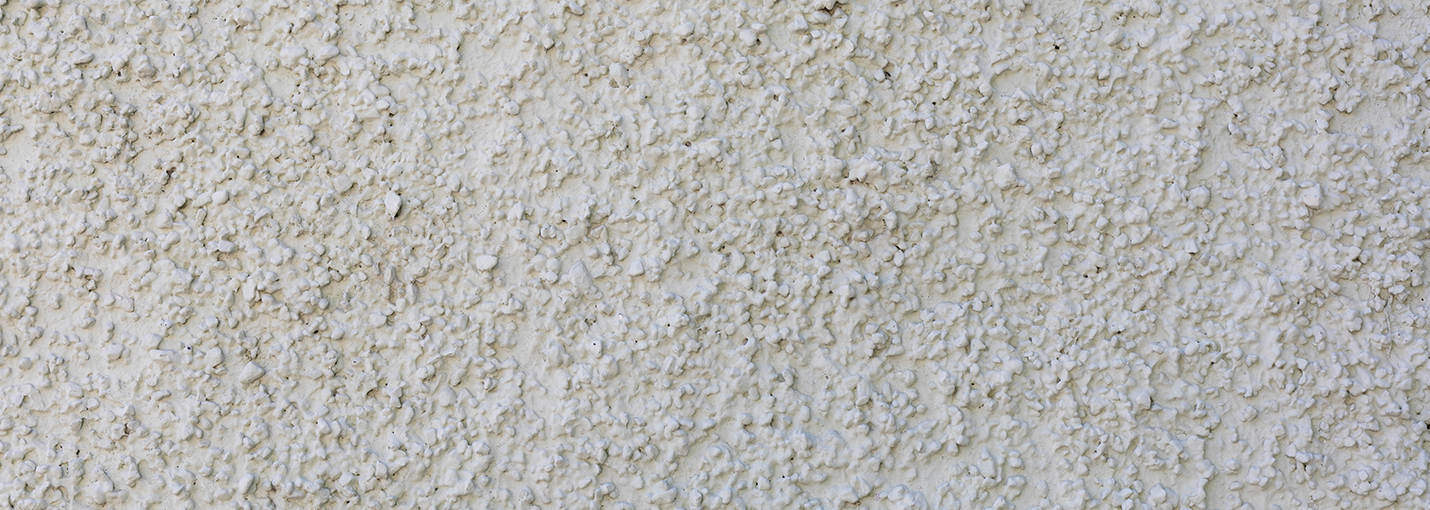What Year Did Asbestos Popcorn Ceilings Go Out of Style?
Bell button jeans, maxi dresses, leisure suits, goldfish platform shoes, and popcorn ceilings all went out of style around 1980. You can still find the first three things on Etsy and in retro clothing stores. Chances are, you can also find a home with popcorn ceilings somewhere in your neighborhood. Today, wearing a leisure suit causes embarrassment. A popcorn ceiling could cause a serious or fatal illness.
Builders used a tissue paper-like substance to create those cool-looking ceiling bumps that were all the rage in the 1960s and 1970s. Intentionally or unintentionally, this paper was often laced with asbestos fibers. More on these things below.
!
If you believe that you were exposed to asbestos, even as a child, speak to a healthcare provider about tests and screening to help diagnose lung-scarring and screen for asbestos-related diseases.
If property owners know about injury hazards, they have a duty of care to remove them. Asbestos in popcorn ceilings is a serious hazard. One microscopic fiber that leaks through a hairline crack could cause asbestosis, mesothelioma, and a number of other very serious diseases. An asbestos exposure lawyer obtains the financial compensation these individuals need to manage these diseases and move on with their lives.
Asbestos has no taste or smell.
You may not know you’re breathing it.

Asbestos in Popcorn Ceilings
This cheap and plentiful fibrous mineral doesn’t conduct heat or electricity. So, the asbestos in popcorn ceilings supplemented the asbestos in attic insulation. In other words, popcorn ceilings weren’t fundamentally a “decorative” thing. Fundamentally, they were an excuse to use more asbestos and eliminate the need for more expensive substitutes.
Other times, builder unintentionally used asbestos. Source cross-contamination issues are very common. The Grace mine saga in Libby, MOntana is a good example. For decades, this mine provided large quantities of vermiculite, a non-asbestos insulator, to construction firms across the country. Grace officials knew the vermiculite was tainted with asbestos. Yet they didn’t warn anyone or alter their production techniques. As a result, workers from the Ken-tucky coal mines to the California sun unknowingly handled asbestos without adequate protective equipment. More on that below.
“The overall evidence suggests there is no safe level of asbestos exposure.”Source: National Cancer Institute (NIH)1 |
So, if you have a popcorn ceiling, it might or might not contain asbestos. A chemical test is the only way to know for sure. A do-it-yourself test might be an option in some cases. Usually, however, it’s better to call a professional, like a home inspector.
“All forms of asbestos are carcinogenic to humans.” 2

Should I Get Rid of My Popcorn Ceiling?
If you know or suspect that a builder laced your ceiling with decorative asbestos, the next issue is, what to do about it. Before we address this issue, we should examine some asbestos hazards as well as some legal requirements.
“Some asbestos fibers may bypass…your body’s natural defenses…and lodge deep within your lungs. Those fibers can remain in place for a very long time and may never be removed.”Source: American Lung Association |
As mentioned, a single fiber could cause mesothelioma or another serious illness. Mesothelioma is an aggressive and rare form of heart-lung cancer that’s usually fatal. Additionally, it’s quickly fatal in most cases. The five-year mesothelioma survival rate is only 10 percent. The picture isn’t much prettier for other asbestos exposure conditions, like asbestosis.
“Generally, those who develop asbestos-related diseases show no signs of illness for a long time after exposure.”Source: National Cancer Institute (NIH)3 |
Asbestos is still with us.
Asbestos use is still legal in many cases. However, the permissible exposure limit is .01 milligrams per cubic centimeter. These fibers are very small. 20,000 fit between Abraham Lincoln’s nose and beard on a penny.
Given these risks, remediation and removal seem like the obvious choice. But R&R is quite expensive. The question comes down to three basic issues:
Visual Wear and Tear: Be very careful when you inspect a popcorn ceiling for hairline cracks and other signs of wear and tear. If you see any such signs, your family and your guests are at risk.
Number of Visitors: Some people host many parties and/or conduct business from their homes. Even if these guests don’t get sick, they could carry asbestos fibers home on their clothes or hair. That’s a lot of potential liability.
Your Plans for Your House: If you plan to sell your house, the popcorn ceiling must go. The house won’t pass inspection if the asbestos level is above .01 mg/cc. If you plan to stay in your house, you might get away with limiting access to rooms with popcorn ceilings.
Err on the side of caution. Homeowners are liable for asbestos exposure injuries, and the damages in these cases are often sky high.
Do You Qualify For Compensation?
Quickly and easily find out how you were exposed by searching W.A.R.D., the largest asbestos database on the planet.
FREE SEARCH >Options for Victims
Now, let’s look at the other side. Popcorn ceiling asbestos exposure victims have basically two legal options.
As mentioned, homeowners are responsible for injuries if they knew about, or should have known about, the injury-causing hazard. Evidence of knowledge includes prior tests and the age of the home. These cases usually remain in state court, but damages might be limited. Many homeowners have limited insurance.
Over $30 Billion is still available (No lawsuit. No fees unless you receive money. No risk.) Stake your claim.  |
Asbestos companies hid the dangers of their products, and millions were exposed.
Fortunately, there is compensation for those they injured (without filing a lawsuit).
Victims could also file negligence claims against the companies that provided asbestos-laced products. Scientists noted the hazards of asbestos around 1900, but companies didn’t warn about the risk until much later. Large multinational companies have deep pockets, but these federal court cases are often complex.
One final note. If the asbestos provider is bankrupt, a victim compensation find claim might be an option. VCFs contain billions of dollars, and the claims are relatively straightforward, if the victim has a good lawyer.
AsbestosClaims.Law
At AsbestosClaims.Law, our mission to secure compensation for asbestos victims is more than professional; it’s personal.
Our founder, Justinian C. Lane, understands the devastating impacts of asbestos firsthand.
Both his grandparents and father, all asbestos workers, passed away from asbestos-induced cancers without realizing their eligibility for asbestos lawsuits or other forms of compensation.
We aim to prevent such tragic oversights by informing and guiding victims and their families through their legal options.
If you or your loved ones have suffered as a result of asbestos exposure, you could be eligible for considerable compensation. These funds could provide for medical treatments, asbestos removal services, and safeguard your health.
In addition, asbestos trusts offer compensation without the need for a lawsuit, providing a quicker, simpler path to justice.
Reach out to us at [email protected] or (206) 455-9190 for assistance with your claim. We offer compassionate listening, clear explanations, and we don’t charge a dime unless we win your case.
Beyond legal claims, we also advise on veterans’ disability, social security, and employment protection like workers’ compensation, FELA, and The Jones Act for maritime workers.
There’s no risk or cost to connect with our experienced team about your rights. Our commitment to your well-being means no fees unless you receive compensation.
| For further queries or concerns about asbestos, explore our website and YouTube page, featuring infographics, videos, and answers to common questions on asbestos-related topics. |
We’ve also introduced W.A.R.D., the Worldwide Asbestos Research Database. It’s the most comprehensive resource for asbestos-related information.
W.A.R.D. assists in pinpointing potential exposure scenarios, asbestos-containing products, and can indicate the types and potential amounts of compensation you may be entitled to receive.
Don’t delay — get in touch with us today!
1 National Cancer Institute (NIH), Asbestos Fact Sheet.
2 IARC Working Group on the Evaluation of Carcinogenic Risks to Humans. Arsenic, metals, fibres, and dusts. IARC Monographs on the Evaluation of Carcinogenic Risks to Humans. 2012 ;100(Pt C):11-465. PMID: 23189751.
3 National Cancer Institute (NIH), Asbestos Fact Sheet.